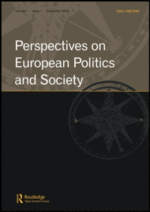Strategy by Stealth? The Development of EU Internal and External Security Strategies
Schröder, Ursula – 2009
Despite lively debates about the institutional development of the European security architecture, the larger question of the strategic aims it should serve has received less attention. This chapter serves to mitigate this lack. It asks how the EU developed its strategic choices in the security field. Comparing the emergence of both internal and external security strategies, the chapter argues that the process has been capability-driven and not strategy-led, resulting in a ‘capability–strategy’ mismatch. As a result of this strategic void at the heart of the European security project, actors within several policy arenas in the complex EU architecture have been able to develop different – and sometimes conflicting – strategic ends: counter-terrorism, human security, common defence, crime-fighting and stability. Particularly in areas where the EU’s Justice and Home Affairs (JHA) and Common Foreign and Security Policy (CFSP) agendas overlap, the chapter finds that EU actors follow diverging strategic ends. The chapter finally assesses the effects of this strategy-building process ‘by stealth’ rather than ‘by design’, and concludes that the incremental development of EU security strategies has led to the emergence of fault lines in the EU’s security policies.


